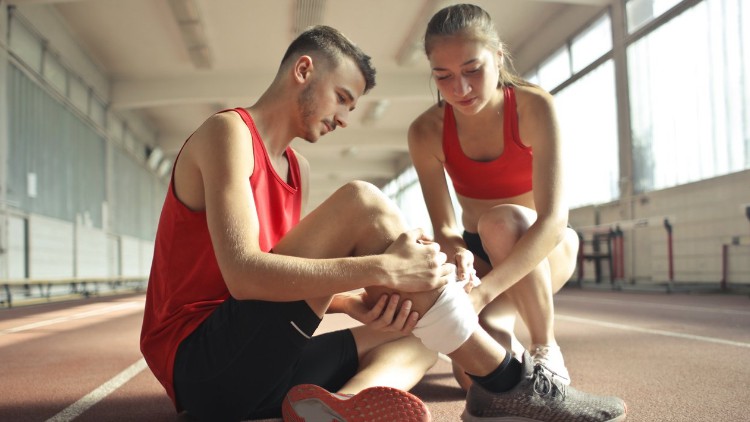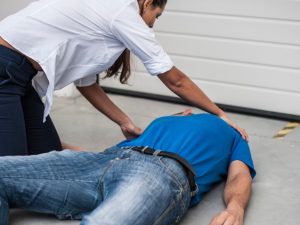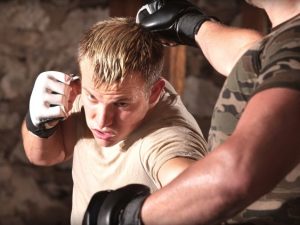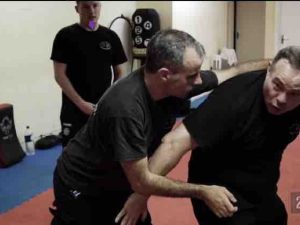Sport First Aid Training
- Description
- Curriculum
- FAQ
- Reviews

The training enables a first-aider to give emergency sports first aid to someone who is injured or becomes ill while watching, playing or officiating sport.
First aid is probably one of the most essential life skills that everyone should have. The knowledge of what to do in a first aid emergency can literally be the difference between life and death.
This Sports First Aid Course will cover all the major injuries and illnesses a person could come across when taking part in sport.
The syllabus is:
-
Aims of First Aid
-
Dealing with an Emergency
-
What is in a first aid box
-
Responsibilities of the First Aider
-
Priorities of Treatment
-
Primary Survey
-
Secondary Survey
-
Recovery Position
-
CPR Adult, Child,
-
Choking Adult, Child
-
Bleeding and Wounds
-
Asthma
-
Diabetes
-
Head Injuries
-
Sprains and Strains
-
Fractures and spinal injuries
-
Drowning
This course allows you to learn first aid skills in the confront of your own home. The course is completely unique and a totally new concept in First Aid training allowing you to learn these vital skills when it suits you. The course consists of videos that encourage you to practice the skills you are learning. There are numerous handouts you can download and keep for future reference as well as short tests to check your learning after various sections. We will keep you entertained and engaged throughout and will always be on hand to help answer any questions you have – just email [email protected] or use the Q&A section. The course is fully compatible with all computers and mobile devices. You will be able to stop and start as often as you like and on completion you will be able to print your Certificate.
EMT First Aid and Lifeguard Training provides this course for guidance and it is not in any way a substitute for medical advice. EMT First Aid and Lifeguard Training is not responsible or liable for any diagnosis made, or actions taken based on this course. We strongly recommend that you attend a practical First Aid course to understand what to do in a medical emergency.
Please be aware that the information is correct at the time of filming June 2021 and relates only to UK Resuscitation and First Aid guidelines. If you are outside the UK please refer to your countries guidelines and governing board.
-
3Arrival at the scene
-
4Dealing
-
5Arrival of the EMS
-
6Minimise the risk of infection
In this video we will address the fear of infection. Especially in the current climate with COVID -19 still prevalent we need to ensure we as first aiders are kept safe. We will talk about how to minimise the risk of infection with appropriate PPE and hand washing.
-
7Hand Washing
Learn how to wash your hands correctly , make sure you download the attached sheet and practice!
-
8Calling the emergency services
Make sure you download the resources attached and also watch the external video on how to set up What 3 Words.
Learn how to call the EMS and what to tell them as well as how to prepare for their arrival.
Have a look at the attached resources to set up the text service for the EMS especially useful if you are hearing impaired (UK) and the silent 55 resource (useful if you can't speak).
-
9Test 1
-
13Task - Practical
-
14Primary, Secondary and Recovery Position - Adult
When you are watching this video we will be encouraging you to practice on yourself or on another (or maybe a teddy or pillow).
Download the resources attached to help you and remember to start and stop the video as often as you like.
Practice the recovery position on both sides - and if you have a casualty, ask them to be floppy and act like a sack of potatoes (if you let go of their hand they should just flop it back to the floor again)!
Practice makes perfect!
-
15Test 2
-
16COVID - 19 - Resuscitation Changes
-
17CPR Introduction Video
-
18CPR Task
-
19CPR - Adult Video
Adult CPR - learn how to perform CPR on a adult. Remember you perform CPR after you have established they are not breathing normally.
Download the adult CPR help sheet that you can use as reference for a step by step guide.
-
20CPR - Child Video
Child CPR - learn how to perform CPR on a child. Remember to perform CPR after you have established they are not breathing normally.
Download the child CPR help sheet that you can use as reference for a step by step guide.
-
21CPR Q+A Video
-
22When to call the ambulance
-
23Using an AED
-
24Adult CPR with the use of an AED
Understanding what an AED is and how to use it when performing CPR on a adult
-
25Child CPR with an AED
Watch the video and learn how to use an Aid on a child
-
26Test 3
-
31What is choking
In this section we are covering the following:
Choking Adult
Choking Child
We will look at the signs and symptoms of each and how to treat them.
Please download the PDF presentation which will give you all the information you need on the above topics. Then watch the videos to see the treatment of choking.
-
32Choking Task
-
33Adult Choking Video
-
34Child Choking
-
35Test 4
-
36Type of bleeding
-
37Treatment of Bleeding
Task - make sure you have found a bandage or something else that you can use as a bandage (such as tights, and/or scarfs)
-
38Task - Practical
-
39Embedded Objects, Amputations and When to seek medical help
-
40Nose bleeds
-
41Small cuts, blisters, splinters, bites and stings
-
42Shock
-
43Test 5








